In today’s fast-paced world, millions of people are searching for effective stress relief solutions that don’t require expensive treatments or pharmaceutical interventions. The growing interest in natural remedies reflects a desire to take control of one’s wellbeing through accessible, cost-effective methods that can be implemented right at home.


The appeal of home remedies lies not only in their affordability but also in the empowerment they provide. When individuals learn to create their own healing solutions, they develop a deeper connection with their health and discover sustainable ways to manage daily stressors. These natural medicine approaches have been trusted for generations, offering gentle yet effective alternatives to conventional treatments.
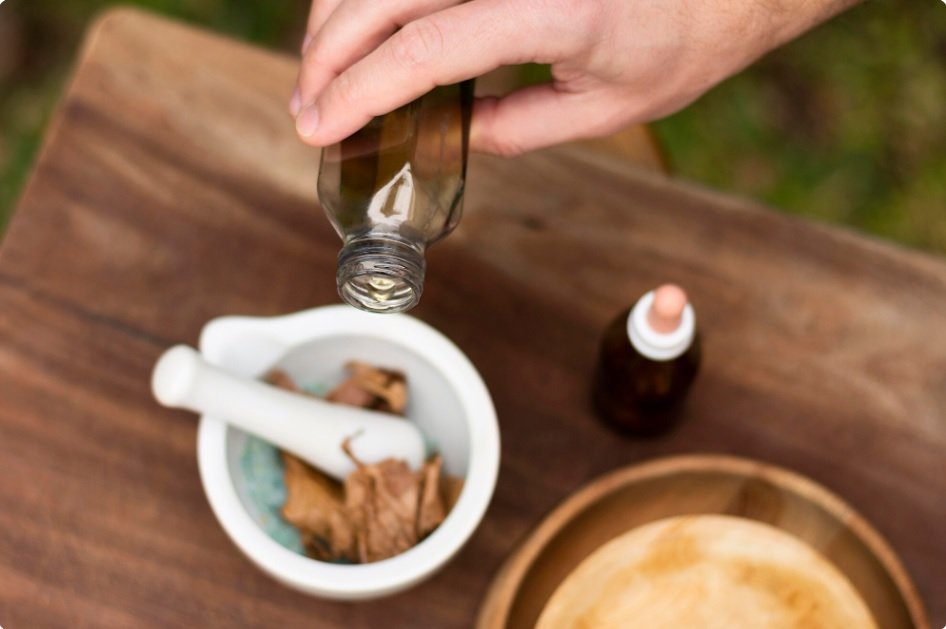
Understanding how to implement stress relief methods at home can transform your daily routine and overall quality of life. From simple breathing techniques to carefully crafted herbal preparations, these time-tested approaches work with your body’s natural healing mechanisms rather than against them.
Understanding Stress and Its Effects
The Science of Stress Response
The human body’s stress response system, often called the fight-or-flight mechanism, serves as our internal alarm system. When triggered, this mechanism releases hormones like cortisol and adrenaline, preparing the body to either confront or flee from perceived threats. While this response proved essential for our ancestors’ survival, modern life presents constant low-level stressors that can keep this system perpetually activated.
Understanding the difference between acute and chronic stress helps explain why natural ways to treat anxiety have become increasingly important. Acute stress occurs in short bursts and can actually be beneficial, sharpening focus and enhancing performance. However, chronic stress—the type most people experience in modern life—can lead to serious health complications including high blood pressure, digestive issues, and compromised immune function.
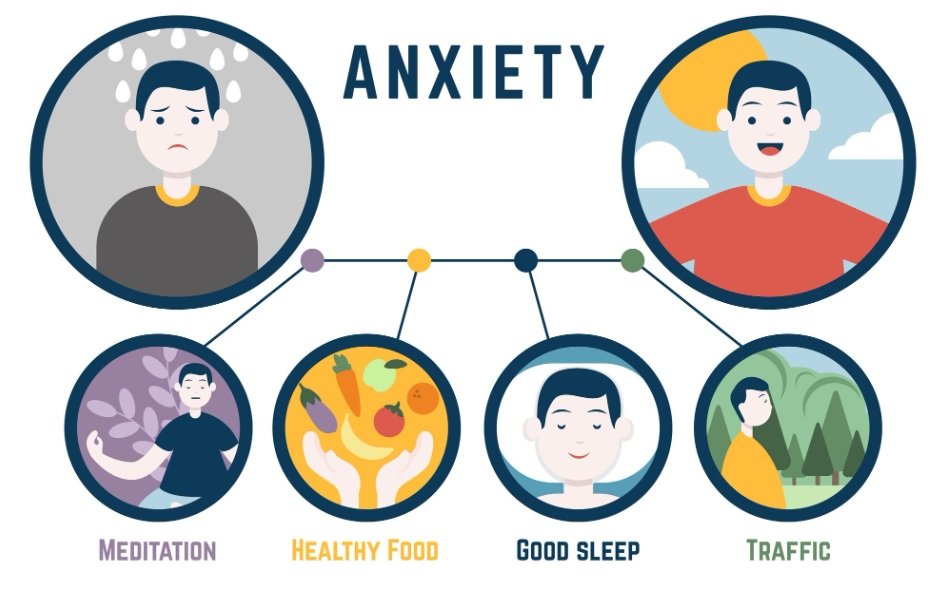
Physical symptoms of stress overload often manifest as tension headaches, muscle tightness, digestive problems, and sleep disturbances. Mental symptoms may include racing thoughts, irritability, difficulty concentrating, and feelings of overwhelm. Natural remedies work by supporting the body’s return to its baseline state of calm, helping to regulate the nervous system and restore balance.
Identifying Your Stress Triggers
Recognizing personal stress patterns represents the first step toward effective management. Common stress sources include work pressures, financial concerns, relationship conflicts, health issues, and major life changes. However, individual responses to these stressors vary significantly based on personal history, coping mechanisms, and overall resilience.
Early warning signs of stress accumulation might include changes in sleep patterns, appetite fluctuations, increased irritability, or physical tension. Some people notice they become more forgetful or have difficulty making decisions when stress levels rise. Creating awareness around these personal signals enables proactive intervention before stress becomes overwhelming.
Stress reducing activities can be most effective when tailored to individual preferences and lifestyle constraints. Some people find relief through physical movement, while others prefer quiet, contemplative practices. The key lies in identifying what resonates personally and building these practices into daily routines.
Aromatherapy DIY Solutions
Essential Oil Blends for Stress Relief
Essential oils offer one of the most accessible and immediate forms of natural stress relief. Lavender stands as perhaps the most researched and widely recognized calming oil, with numerous studies supporting its ability to reduce anxiety and promote relaxation. Its gentle, floral scent can help lower cortisol levels and encourage deeper, more restful sleep.
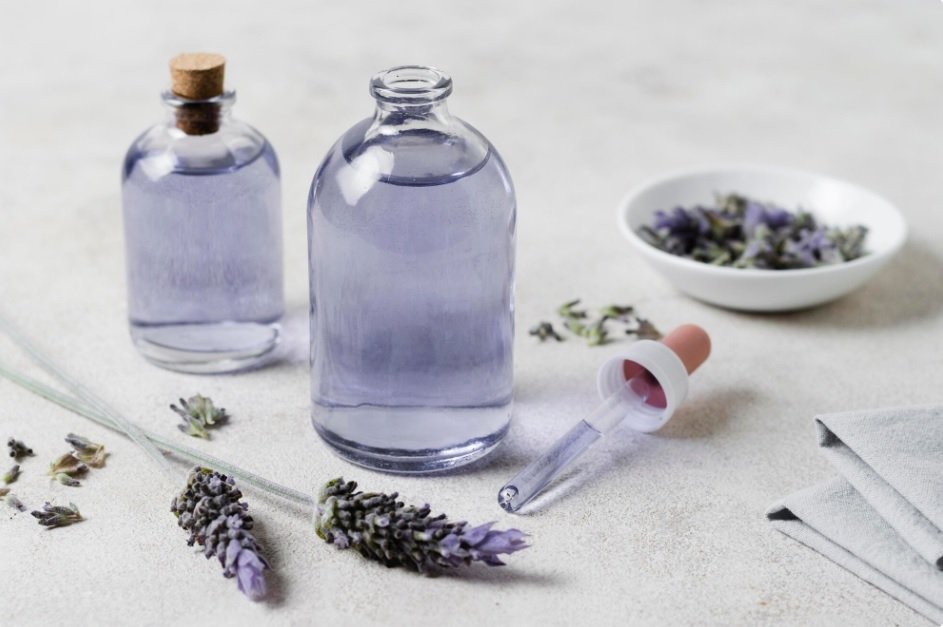
Bergamot essential oil provides mood-elevating properties that can help counteract stress-induced depression or low energy. This citrusy oil works particularly well for morning stress relief, as it can help set a positive tone for the day while providing gentle energizing effects without overstimulation.
Chamomile oil, derived from the same plant used in calming teas, offers powerful anxiety-reducing benefits when used aromatically. Its sweet, apple-like scent can help quiet racing thoughts and promote a sense of peaceful calm. Ylang-ylang rounds out this quartet of stress-relief oils with its ability to help balance emotions and reduce tension.
Creating custom blends allows for personalization based on individual preferences and specific stress symptoms. A basic calming blend might combine 4 drops lavender, 2 drops bergamot, and 2 drops chamomile in a 10ml roller bottle filled with carrier oil. For those dealing with anxiety-related stress, increasing the chamomile proportion can enhance the blend’s calming effects.
Home Diffusion Methods
Reed diffusers provide continuous, gentle aromatherapy without requiring electricity or active attention. Creating these at home involves combining essential oils with a carrier oil like sweet almond or fractionated coconut oil in a narrow-neck bottle, then inserting reed sticks that draw the oil up and disperse the scent into the air.
DIY room sprays offer another convenient option for quick stress relief. These can be made by combining distilled water, witch hazel or vodka as an emulsifier, and essential oils in a spray bottle. A stress-relief room spray might include 20 drops lavender, 10 drops bergamot, and 5 drops ylang-ylang in 4 ounces of water with 1 tablespoon of witch hazel.
Steam inhalation provides immediate relief for stress-related tension, particularly when it manifests as headaches or sinus pressure. Adding 2-3 drops of essential oil to a bowl of hot water, then draping a towel over the head and bowl creates a personal aromatherapy session that can quickly shift mental state.
Topical Applications
Stress-relief roll-ons offer portable, convenient access to aromatherapy benefits throughout the day. These concentrated blends can be applied to pulse points like wrists, temples, or behind the ears for quick stress relief. A effective roll-on might combine 10 drops lavender, 5 drops bergamot, and 3 drops chamomile in a 10ml roller bottle filled with carrier oil.
Self-massage oil blends serve dual purposes, combining the stress-relieving benefits of touch with aromatherapy. These oils can be massaged into tense shoulders, neck muscles, or feet for both physical and emotional relief. The act of self-massage itself helps activate the parasympathetic nervous system, promoting relaxation and stress reduction.
Bath salt combinations create luxurious, spa-like experiences at home while delivering essential oils through both inhalation and skin absorption. Combining Epsom salts with essential oils and carrier oils prevents skin irritation while maximizing therapeutic benefits. A stress-relief bath blend might include 1 cup Epsom salt, 2 tablespoons carrier oil, and 8-10 drops total of lavender and chamomile oils.
Herbal Remedies You Can Make at Home
Calming Herbal Teas
Herbal teas represent one of the most gentle and accessible forms of natural remedies for anxiety. Chamomile tea stands as perhaps the most well-known calming beverage, with compounds that bind to the same brain receptors as anti-anxiety medications, though much more gently. Preparing chamomile tea involves steeping 1-2 teaspoons of dried flowers or 1 tablespoon of fresh flowers in hot water for 5-10 minutes.
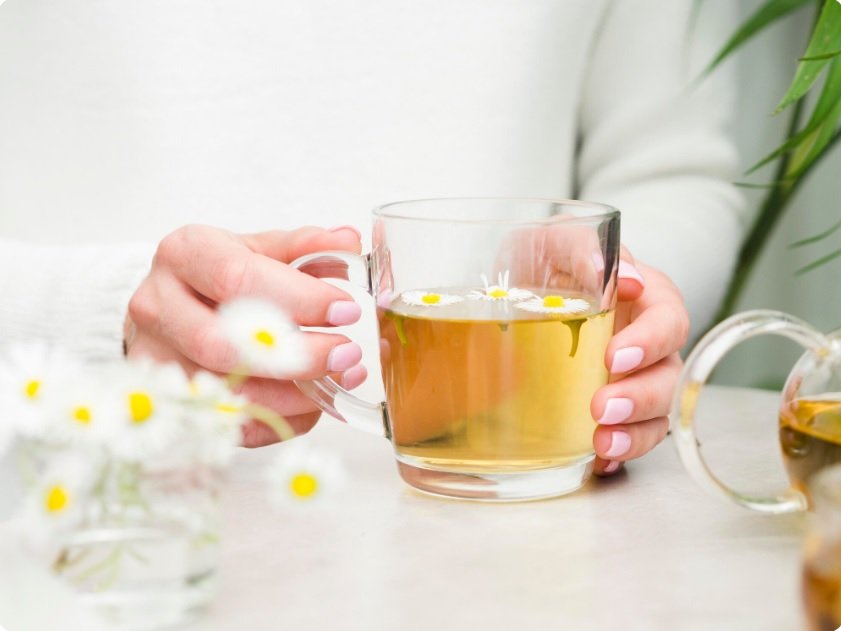
Passionflower tea offers another excellent option for nervous tension and restless minds. This herb has been traditionally used to quiet mental chatter and promote peaceful sleep. The tea has a mild, pleasant flavor and can be combined with other calming herbs for enhanced effects.
Lemon balm provides gentle anxiety relief while supporting digestive health, which often becomes compromised during stressful periods. This mint-family herb grows easily in home gardens and makes a refreshing tea that can be enjoyed hot or iced. Its lemony scent alone can help lift mood and reduce stress.
Ashwagandha root preparations require more careful attention to dosing but offer powerful adaptogenic benefits for stress management. This herb helps the body adapt to stress more effectively over time, supporting both immediate relief and long-term resilience. Ashwagandha can be prepared as a decoction by simmering the root in water for 20-30 minutes.
Tinctures and Herbal Extracts
Creating herbal tinctures at home allows for more concentrated herbal preparations that maintain potency for extended periods. The basic process involves combining dried herbs with high-proof alcohol in specific ratios, then allowing the mixture to extract for several weeks with regular shaking.
Valerian root tinctures provide powerful support for both sleep difficulties and stress-related tension. This herb works particularly well for those whose stress manifests as insomnia or restless sleep. However, valerian can be stimulating for some individuals, so testing small amounts initially is important.
Holy basil, also known as tulsi, creates excellent tinctures for daily stress management. This adaptogenic herb helps regulate cortisol levels while supporting overall nervous system health. Unlike sweet basil used in cooking, holy basil has been revered in traditional medicine systems for its stress-relieving properties.
Proper dosing guidelines for homemade tinctures typically range from 1-3 droppers full taken 1-3 times daily, though individual needs may vary. Starting with smaller amounts and gradually increasing allows for finding the most effective personal dosage while avoiding potential side effects.
Herbal Baths and Soaks
Oatmeal baths provide both physical and emotional stress relief, particularly beneficial for those whose stress manifests as skin irritation or general body tension. The saponins in oats create a gentle, moisturizing soak that can help calm both skin and nerves. Grinding rolled oats into a fine powder and adding to warm bathwater creates an instantly soothing experience.
Epsom salt bath recipes with herbs combine the muscle-relaxing benefits of magnesium sulfate with the aromatherapy and skin-conditioning properties of medicinal plants. Adding dried lavender, chamomile, or rose petals to Epsom salt baths enhances both the sensory experience and therapeutic benefits.
Milk and honey stress-relief baths draw from ancient beauty and wellness traditions. The lactic acid in milk gently exfoliates while proteins nourish the skin. Honey provides antimicrobial and moisturizing benefits. Together, these ingredients create a luxurious, calming bath that helps wash away the day’s stress while nourishing the skin.
Foot soak remedies offer targeted relief for those who spend long days on their feet or prefer focused treatments over full-body baths. Foot soaks can include warming spices like ginger for circulation, cooling herbs like peppermint for tired feet, or calming herbs like lavender for overall stress relief.
Physical DIY Stress Relief Techniques
Self-Massage Techniques
Self-massage provides immediate stress relief by activating pressure points and releasing physical tension that accumulates during stressful periods. Scalp massage techniques can provide significant relief for tension headaches, which commonly accompany high stress levels. Using fingertips to apply gentle circular pressure across the scalp, temples, and base of the skull helps increase circulation and reduce muscle tension.
Neck and shoulder massage addresses one of the most common areas where stress manifests physically. These areas often become tight and painful during stressful periods, contributing to headaches and general discomfort. Simple techniques include gentle neck rolls, shoulder blade squeezes, and applying pressure to trigger points along the neck and shoulder muscles.
Hand and wrist massage proves particularly beneficial for those who experience stress related to desk work or repetitive tasks. These techniques can be performed throughout the day without special equipment, making them ideal for workplace stress management. Simple exercises include wrist circles, finger stretches, and palm pressure point massage.
Foot reflexology points offer a unique approach to stress relief based on traditional healing systems that map the entire body onto specific areas of the feet. Applying pressure to certain points on the feet may help reduce overall stress and promote relaxation throughout the body.
Breathing and Movement Practices
Box breathing represents one of the most effective and accessible stress relief methods available. This technique involves inhaling for four counts, holding for four counts, exhaling for four counts, and holding empty for four counts. This pattern helps regulate the nervous system and can be practiced anywhere without drawing attention.
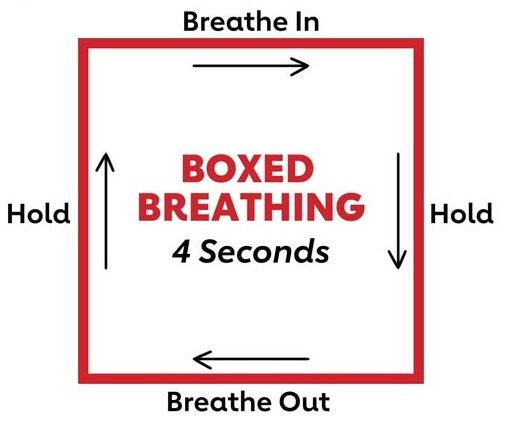
Progressive muscle relaxation guides practitioners through systematically tensing and releasing different muscle groups throughout the body. This practice helps develop awareness of physical tension while providing tools for consciously releasing it. Starting with the toes and working upward, each muscle group is tensed for 5-10 seconds, then completely relaxed.
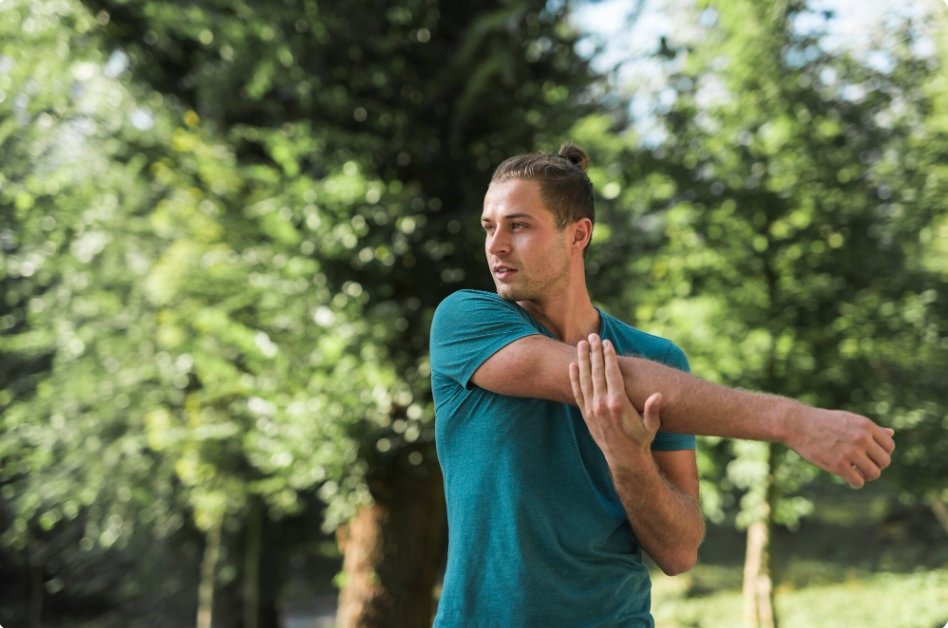
Simple yoga stretches adapted for home practice can provide both physical and mental stress relief. Gentle movements like child’s pose, cat-cow stretches, and seated spinal twists can be performed without special equipment or extensive training. These movements help release physical tension while encouraging mindful attention to the present moment.
Tai chi-inspired movements offer flowing, meditative exercises that combine gentle physical activity with stress reduction. These slow, deliberate movements can be practiced in small spaces and modified for different fitness levels. The focus required for coordinated movement naturally draws attention away from stressful thoughts.
Temperature Therapy
Cold compress techniques provide immediate relief for acute stress symptoms, particularly stress-related headaches or feelings of overwhelm. Applying cold to the temples, back of the neck, or wrists can help slow heart rate and provide a grounding sensation during moments of high stress.
Warm compress applications work well for muscle tension and general stress-related discomfort. Heat helps increase circulation and relax tense muscles, making it particularly effective for neck and shoulder tension that commonly accompanies stress. Warm compresses can be made using rice-filled socks heated in the microwave or traditional hot water bottles.
Contrast showers, alternating between warm and cold water, can help regulate the nervous system and increase stress resilience over time. This practice involves ending a warm shower with 30 seconds to 2 minutes of cold water, which can help activate the body’s natural stress-adaptation mechanisms.
Hot water bottles provide comforting warmth that can help ease both physical tension and emotional stress. The weight and warmth of a hot water bottle placed on the chest, abdomen, or back can provide a sense of security and comfort similar to weighted blankets but more targeted and customizable.
Nutritional DIY Remedies
Stress-Fighting Smoothies and Drinks
Magnesium-rich green smoothies support stress management by providing essential nutrients that help regulate the nervous system. Magnesium deficiency is common and can contribute to anxiety and stress symptoms. Incorporating leafy greens, nuts, seeds, and bananas into smoothies provides easily absorbed magnesium along with other stress-fighting nutrients.
Adaptogenic golden milk preparations combine traditional spices with milk or plant-based alternatives to create warming, stress-relieving beverages. Turmeric provides anti-inflammatory benefits, while spices like cinnamon and cardamom add flavor and additional health benefits. Adding ashwagandha powder transforms golden milk into a powerful adaptogenic drink.
Calming herbal lemonades offer refreshing alternatives to caffeinated beverages while providing stress relief benefits. These drinks can be made with herbal teas as a base, adding fresh lemon juice and natural sweeteners. Combining chamomile tea with lemon creates a soothing drink that can be enjoyed hot or cold.
Homemade electrolyte drinks support stress recovery by replenishing minerals that may become depleted during stressful periods. These drinks can be made with coconut water, sea salt, lemon juice, and natural sweeteners, providing hydration and mineral support without artificial additives.
Mood-Boosting Snacks
Dark chocolate stress balls combine the mood-boosting effects of cacao with nutrient-dense ingredients like nuts and seeds. Cacao contains compounds that can help improve mood and reduce stress hormones. Simple recipes combine cocoa powder, nut butter, honey, and mix-ins like coconut flakes or crushed nuts.
Omega-3 rich seed and nut mixes provide essential fatty acids that support brain health and mood regulation. Combinations of walnuts, pumpkin seeds, sunflower seeds, and flax seeds create portable snacks that help stabilize blood sugar and provide sustained energy during stressful periods.
Banana and almond butter combinations offer quick stress-relief snacks that combine natural sugars with protein and healthy fats. Bananas contain tryptophan, which helps produce mood-regulating serotonin, while almond butter provides sustained energy and satisfying protein.
Probiotic-rich fermented snacks support gut health, which increasingly research shows plays a crucial role in mood and stress management. Simple fermented vegetables, kefir, or yogurt-based snacks can help maintain healthy gut bacteria that support overall mental wellbeing.
Kitchen Herb Gardening
Growing calming herbs indoors ensures fresh access to stress-relieving plants year-round. Herbs like chamomile, lemon balm, lavender, and mint can be successfully grown in containers on sunny windowsills. Fresh herbs often provide more potent benefits than dried versions and can be used immediately when stress relief is needed.
Harvesting and preserving techniques help maximize the benefits of homegrown herbs. Proper timing of harvest, usually in the morning after dew has dried but before the day becomes too warm, ensures optimal potency. Drying herbs in small bundles hung in dark, dry areas preserves their therapeutic compounds for later use.
Fresh herb tea preparations can be made throughout the growing season using newly harvested herbs. Fresh herb teas often have brighter, more complex flavors than their dried counterparts and can provide immediate stress relief when prepared from herbs picked specifically for that purpose.
Cooking with stress-relieving spices incorporates therapeutic benefits into daily meals. Herbs and spices like turmeric, ginger, garlic, and rosemary not only enhance food flavors but also provide anti-inflammatory and stress-reducing compounds that support overall health and resilience.
Environmental and Sensory DIY Solutions
Creating Calming Spaces
Color psychology plays a significant role in stress reduction methods, with certain colors naturally promoting relaxation and calm. Soft blues, gentle greens, and warm neutrals can help create peaceful environments that support stress relief. These colors can be incorporated through paint, textiles, artwork, or simple accessories without major renovation.
DIY meditation corner setup transforms any small space into a dedicated area for stress relief practices. This might include comfortable cushions, soft lighting, plants, and meaningful objects that promote peace. Having a designated space for stress relief activities helps establish routine and signals to the mind that it’s time to relax.
Natural lighting optimization involves maximizing daylight during the day while creating soft, warm lighting for evening hours. Harsh overhead lighting can contribute to stress, while gentle, diffused lighting promotes relaxation. Simple changes like adding lampshades, using warmer bulbs, or strategically placing mirrors can significantly improve lighting quality.
Decluttering techniques for mental clarity recognize the connection between external environment and internal state. Organized, clean spaces tend to promote calm and focus, while cluttered environments can contribute to feelings of overwhelm. Simple organizing systems and regular decluttering sessions can provide both immediate and ongoing stress relief benefits.
Visual and Artistic Stress Relief
Adult coloring and mandala creation offer meditative activities that naturally quiet busy minds. The focused attention required for detailed coloring naturally draws mental energy away from stressful thoughts while providing a sense of accomplishment. These activities require minimal supplies and can be done almost anywhere.
Nature photography for mindfulness combines the stress-reducing benefits of spending time outdoors with creative expression. Even simple smartphone photography can become a mindfulness practice when approached with intention. Focusing on natural details, light, and composition naturally draws attention to the present moment.
Vision board creation provides positive focus during stressful periods by helping visualize desired outcomes and goals. This creative process can help shift perspective from current stressors to future possibilities, providing hope and motivation during difficult times.
Journaling templates and prompts offer structured approaches to processing stress and emotions through writing. Simple prompts like “three things I’m grateful for today” or “what I learned from today’s challenges” can help reframe stressful experiences and identify patterns or solutions.
Music and Sound Therapy
Creating personalized relaxation playlists allows for customized auditory stress relief. Different types of music affect people differently, so personal playlists might include classical music, nature sounds, instrumental music, or even familiar songs that evoke positive memories and emotions.
DIY singing bowl alternatives can be created using household items like wine glasses or metal bowls. These create resonant tones that can help focus attention and promote relaxation. The vibrations from these improvised instruments can provide similar benefits to traditional singing bowls at a fraction of the cost.
Nature sound recording and playback brings the calming effects of natural environments indoors. Recording sounds from peaceful outdoor locations or downloading high-quality nature sounds can help create calming soundscapes that mask stressful urban noise while promoting relaxation.
Humming and vocal stress release techniques use the body’s own capacity for sound healing. Humming creates vibrations that can help release physical tension while the act of controlled breathing required for sustained humming naturally activates relaxation responses.
Mindfulness and Mental DIY Practices
Meditation Techniques for Beginners
Simple breath-focused meditations provide accessible entry points into stress relief practices that require no special equipment or training. These practices involve simply focusing attention on the natural rhythm of breathing, gently returning attention to the breath whenever the mind wanders to stressful thoughts.
Walking meditation practices combine gentle physical activity with mindfulness, making them ideal for those who find sitting meditation challenging. These practices involve walking slowly and deliberately, paying attention to each step, the feeling of feet touching ground, and the rhythm of movement.
Body scan relaxation methods systematically direct attention through different parts of the body, helping develop awareness of physical tension while promoting systematic relaxation. These practices can be particularly helpful for those whose stress manifests primarily through physical symptoms.
Loving-kindness meditation for stress focuses on generating feelings of compassion and goodwill, first toward oneself and then extending to others. This practice can help counteract stress-related negativity and criticism while promoting emotional resilience and connection.
Cognitive Stress Management
Thought-stopping techniques provide tools for interrupting cycles of stressful thinking before they become overwhelming. Simple techniques include mentally saying “stop” when noticing stress-inducing thoughts, or physically engaging in activities that require focused attention and naturally redirect mental energy.
Positive affirmation creation involves developing personally meaningful statements that counteract common stress-related negative thoughts. Effective affirmations are specific, realistic, and stated in present tense, such as “I handle challenges with calm confidence” or “I am capable of managing this situation.”
Worry time scheduling contains anxious thoughts to specific times rather than allowing them to interrupt daily activities. This technique involves setting aside 15-20 minutes daily for focused worry, then redirecting anxious thoughts to the scheduled time when they arise throughout the day.
Perspective-shifting exercises help reframe stressful situations by considering alternative viewpoints or broader contexts. Questions like “will this matter in five years?” or “what would I tell a friend in this situation?” can help reduce the intensity of current stressors.
Creative Expression for Stress Relief
Free-writing and brain dump techniques provide outlets for releasing mental stress through unstructured writing. These practices involve writing continuously for set periods without concern for grammar, spelling, or coherence, allowing thoughts and emotions to flow freely onto paper.
Art therapy exercises using household items make creative expression accessible regardless of artistic training or supplies. Simple activities like drawing with available materials, creating collages from magazines, or sculpting with clay or play dough can provide therapeutic benefits through creative expression.
Music creation with simple instruments or even improvised sound-makers provides emotional release and creative satisfaction. This might involve drumming on pots, creating simple melodies with glasses filled with different water levels, or experimenting with any available musical instruments.
Dance and movement for emotional release recognizes the connection between physical expression and emotional processing. Simple movements, stretching to music, or even dancing alone in private spaces can help release tension and shift emotional states naturally.
Sleep and Recovery DIY Remedies
Natural Sleep Aids
DIY pillow sachets filled with calming herbs provide gentle aromatherapy throughout the night. Small fabric pouches filled with dried lavender, chamomile, or herbal blends can be tucked inside pillowcases or placed near the head to promote restful sleep. These sachets can be refreshed periodically by gently crushing to release more fragrance.
Bedtime routine optimization creates consistent signals that prepare both mind and body for rest. Effective routines might include dimming lights an hour before bed, engaging in quiet activities like reading or gentle stretching, and avoiding screens or stimulating activities in the evening hours.
Sleep-promoting room preparations involve creating an environment that naturally supports rest and recovery. This includes maintaining cool temperatures (around 65-68°F), ensuring darkness through blackout curtains or eye masks, and minimizing noise through white noise machines or earplugs.
Magnesium spray recipes provide topical application of this essential mineral that supports muscle relaxation and nervous system calm. These sprays can be made by dissolving magnesium flakes in distilled water, then applying to feet or legs before bed for absorption through the skin.
Recovery and Restoration Practices
Gentle stretching routines designed specifically for stress recovery help release physical tension while preparing the body for rest. These routines focus on areas that commonly hold stress, such as the neck, shoulders, hips, and back, using slow, deliberate movements that promote relaxation.
Hydration strategies for stress management recognize that chronic stress can affect fluid balance and that proper hydration supports all bodily functions involved in stress recovery. This includes drinking adequate water throughout the day while avoiding excessive caffeine or alcohol that can interfere with sleep and recovery.
Power nap optimization techniques help maximize the restorative benefits of short daytime rest periods. Effective power naps typically last 10-20 minutes and occur in early afternoon, providing energy restoration without interfering with nighttime sleep patterns.
Weekend recovery ritual creation establishes regular practices for deeper restoration and stress release. These might include longer sleep periods, relaxing activities, time in nature, or engaging in hobbies that provide joy and satisfaction outside of daily responsibilities.
Technology and Digital Wellness
Digital Detox Strategies
Creating phone-free zones and times helps reduce the constant stimulation that can contribute to modern stress levels. Designating specific areas like bedrooms or dining areas as phone-free zones, or establishing phone-free times like the hour before bed, can significantly improve stress levels and sleep quality.

Social media break techniques recognize that constant exposure to curated images and information overload can contribute to stress and anxiety. Regular breaks from social media, ranging from a few hours to several days, can help reset mental state and reduce comparison-based stress.
Blue light reduction methods help minimize the impact of screen use on sleep and circadian rhythms. Simple strategies include using device settings to reduce blue light in evening hours, wearing blue light blocking glasses, or switching to warm lighting in living spaces during evening hours.
Mindful technology use practices involve using devices with intention rather than as automatic habits. This might include checking messages at designated times rather than constantly, using technology for specific purposes rather than mindless scrolling, and regularly evaluating whether technology use is adding value or contributing to stress.
Using Technology Mindfully for Stress Relief
Meditation apps and timers can provide structure and guidance for stress relief practices, offering guided meditations, breathing exercises, and progress tracking. Many free options provide substantial content for beginners while paid versions often include more extensive libraries and features.
Nature sounds and white noise apps help create calming auditory environments that mask stressful urban noise while promoting focus and relaxation. These apps can be particularly helpful for sleep, work concentration, or meditation practices.
Habit tracking for stress management helps identify patterns and maintain consistency with stress relief practices. Simple tracking of activities like exercise, sleep, meditation, or mood can provide insights into what practices most effectively support individual stress management.
Online community support systems can provide connection and encouragement for stress management goals. Virtual support groups, forums focused on wellness topics, or social media groups dedicated to specific practices can offer motivation and shared experiences.
Seasonal and Situational Stress Management
Seasonal Affective Disorder DIY Remedies
Light therapy alternatives recognize that reduced daylight during winter months can significantly impact mood and stress levels. Simple strategies include spending time near windows during daylight hours, using bright white lights for daily activities, or taking short outdoor walks even during overcast days.
Winter mood-boosting techniques help counteract the natural tendency toward increased stress during darker, colder months. These might include maintaining regular exercise routines, incorporating warming spices into meals, practicing gratitude for winter’s unique benefits, or engaging in cozy indoor activities that provide comfort and joy.
Holiday stress management acknowledges that celebratory seasons often bring unique stressors related to social obligations, financial pressures, and family dynamics. Strategies include setting realistic expectations, maintaining regular self-care routines, planning ahead to avoid last-minute pressures, and focusing on meaningful connections rather than perfect outcomes.
Seasonal ingredient utilization takes advantage of naturally available natural remedies that change throughout the year. This might include using fresh spring herbs for detoxification, summer fruits for hydration and energy, fall spices for warming and grounding, or winter roots for sustained nourishment.
Workplace Stress Solutions
Desk-friendly stress relief techniques provide discrete options for managing workplace stress without drawing attention or requiring significant time investment. These include desk stretches, breathing exercises, brief meditation practices, or using essential oil inhalers for quick aromatherapy benefits.
Commute stress management transforms travel time from stressful necessity into opportunity for preparation or decompression. This might include listening to calming music or podcasts, practicing breathing exercises during traffic delays, or using public transportation time for meditation or reading.
Break time optimization maximizes the stress-relief potential of short work breaks. Rather than scrolling social media or remaining seated, effective break activities might include brief walks, stretching, deep breathing, or stepping outside for fresh air and natural light.
Office environment improvements can significantly impact daily stress levels through small changes that create more supportive workspaces. This might include adding plants, using natural lighting when possible, keeping homemade remedies like stress-relief roll-ons readily available, or creating visual reminders of calming imagery.
Creating Your Personal Stress-Relief Toolkit
Assessment and Customization
Stress level evaluation methods help establish baseline measurements and track progress over time. Simple self-assessment scales, mood tracking, or physical symptom monitoring can provide insights into individual stress patterns and the effectiveness of different relief strategies.
Personal preference identification recognizes that effective stress relief varies significantly between individuals. Some people prefer active stress relief through physical activity, while others find calm through quiet, meditative practices. Understanding personal preferences helps focus energy on the most effective approaches.
Remedy effectiveness tracking involves systematically noting which natural remedies for anxiety and stress provide the most benefit for individual symptoms and situations. This might involve keeping a simple journal of what techniques were used and how effective they proved to be over time.
Seasonal rotation planning acknowledges that stress relief needs may change with seasons, life circumstances, or availability of ingredients. Planning rotation of different remedies helps prevent habituation while ensuring that appropriate tools are available when needed.
Emergency Stress Relief Protocol
Quick 5-minute stress busters provide immediate relief options for moments when stress becomes overwhelming. These might include specific breathing techniques, brief physical movements, aromatherapy inhalers, or mental exercises that can quickly shift attention and reduce stress intensity.

Portable stress relief kit assembly creates readily available tools for stress management in any location. These kits might include essential oil roll-ons, natural remedies in portable forms, stress balls, calming music playlists, or written reminders of effective techniques.
Crisis moment management techniques provide structured approaches for navigating particularly intense stress episodes. These protocols might include specific sequences of activities, emergency contacts for support, or predetermined safe spaces for regrouping during overwhelming moments.
Support system activation strategies recognize that social connection plays a crucial role in stress management. Having predetermined plans for reaching out to friends, family members, or professional support when stress becomes unmanageable provides essential backup for self-care practices.
Safety Considerations and Precautions
When to Seek Professional Help
While natural remedies for anxiety and stress can provide significant relief for many people, certain warning signs indicate the need for professional intervention. Persistent sleep disturbances lasting more than two weeks, significant changes in appetite or weight, inability to function in daily activities, or thoughts of self-harm all warrant immediate professional attention.
Chronic stress that doesn’t improve with consistent self-care efforts may indicate underlying health issues or may require more intensive intervention. Mental health professionals can provide additional tools, medications when appropriate, or help identify underlying causes that may not be apparent through self-assessment.

Medication interaction considerations become important when using herbal remedies alongside prescription medications. Some herbs can interact with common medications, particularly blood thinners, heart medications, or psychiatric drugs. Consulting with healthcare providers before beginning herbal protocols helps ensure safety.
Mental health resource identification involves knowing how to access professional support when needed. This includes understanding insurance coverage, identifying local practitioners, knowing crisis hotline numbers, or understanding when emergency room visits might be necessary for mental health crises.
Safe Practice Guidelines
Essential oil dilution ratios and safety guidelines help prevent skin irritation or other adverse reactions. Most essential oils should be diluted to 1-3% concentration for topical use, which translates to about 6-18 drops per ounce of carrier oil. Some oils require even greater dilution, and certain oils should never be used topically.
Herb contraindications and allergies require careful consideration, particularly for those with known plant allergies or sensitivities. Some herbs can cause allergic reactions in sensitive individuals, while others may be contraindicated for certain health conditions such as pregnancy, high blood pressure, or autoimmune disorders.
Pregnancy and nursing considerations recognize that many herbs and essential oils that are safe for general use may not be appropriate during pregnancy or while breastfeeding. Consulting with healthcare providers familiar with herbal medicine helps ensure safety for both mother and child.
Children and elderly safety modifications acknowledge that dosing and safety considerations may differ for vulnerable populations. Children typically require lower doses of herbal preparations, while elderly individuals may be more sensitive to certain herbs or may have medication interactions to consider.
Building Long-Term Stress Resilience
Lifestyle Integration
Making stress relief a daily habit involves incorporating small, manageable practices into existing routines rather than attempting major lifestyle overhauls. This might mean adding five minutes of breathing exercises to morning routines, using herbal teas instead of coffee during stressful periods, or ending days with brief gratitude practices.
Preventive versus reactive approaches recognize that consistent daily stress management practices often prove more effective than waiting until stress becomes overwhelming before taking action. Building resilience through regular self-care helps prevent stress accumulation while providing tools for managing unavoidable stressful situations.
Building stress resilience over time involves gradually expanding stress management skills and capacity. Like physical fitness, stress resilience develops through consistent practice and gradually increasing challenges. What initially requires conscious effort eventually becomes natural, automatic response to stressful situations.
Community and support system development recognizes that social connections play crucial roles in stress management and overall wellbeing. Building relationships with others who value health and wellness provides both practical support and encouragement for maintaining stress relief practices over time.
Tracking Progress and Adjusting Approaches
Stress level monitoring techniques help evaluate the effectiveness of different stress management approaches over time. Simple daily stress ratings, sleep quality tracking, or mood monitoring can provide objective feedback about which practices most effectively support individual wellbeing.
Remedy effectiveness evaluation involves regularly assessing which natural remedies provide the most benefit and adjusting practices accordingly. This might mean discontinuing less effective approaches while increasing use of more beneficial practices, or rotating between different techniques to prevent habituation.
Seasonal and life stage adaptations acknowledge that stress relief needs change over time due to external circumstances, life transitions, or changing physical needs. Flexibility in approach allows for adjusting practices to meet evolving requirements while maintaining consistent commitment to stress management.
Continuous improvement strategies involve regularly evaluating and refining stress management approaches based on experience and changing needs. This might include learning new techniques, deepening existing practices, or adapting approaches based on feedback from tracking efforts.
Conclusion
The journey toward effective stress management through natural remedies represents both an art and a science, requiring patience, experimentation, and consistent commitment to self-care. The wide array of home remedies presented in this comprehensive guide offers multiple pathways to relief, recognizing that individual responses to stress and various remedies vary significantly.
The most effective DIY stress relief approaches typically combine multiple modalities rather than relying on single techniques. Someone might use aromatherapy for immediate relief, herbal teas for ongoing support, physical practices for releasing tension, and mindfulness techniques for long-term resilience building. This integrated approach addresses stress from multiple angles while providing backup options when primary methods aren’t available.
Consistency proves more important than perfection in stress management practices. Regular use of simple techniques often provides greater benefits than sporadic use of complex protocols. Starting with one or two appealing approaches and gradually expanding the toolkit allows for sustainable integration of stress relief practices into daily life.
Personalization remains key to successful stress management. What provides profound relief for one person may prove ineffective for another, making experimentation and self-awareness crucial components of developing effective personal protocols. The extensive options presented in this guide provide starting points for discovering individual preferences and most effective approaches.
The empowerment that comes from developing personal stress management skills extends beyond immediate relief to build confidence and resilience for handling future challenges. Learning to create effective natural remedies for anxiety and stress provides tools that remain available regardless of external circumstances, creating a foundation for long-term wellbeing.
Remember that while these natural medicine approaches offer significant benefits for many people, they complement rather than replace professional healthcare when needed. Persistent or severe stress symptoms warrant professional evaluation to rule out underlying health conditions and ensure appropriate care.
The investment of time and energy required to develop effective stress management practices pays dividends in improved quality of life, better relationships, enhanced work performance, and greater overall life satisfaction. These natural remedies offer pathways to reclaiming control over stress responses while supporting the body’s innate capacity for healing and balance.
Quick Reference Guides
Emergency Stress Relief Technique Card
Immediate Relief (Under 5 Minutes):
- Box breathing: 4 counts in, hold 4, out 4, hold 4
- Cold water on wrists and temples
- Lavender essential oil on pulse points
- 10 shoulder rolls and neck stretches
- Gratitude for three things in current moment
Portable Kit Essentials:
- Stress-relief essential oil roll-on
- Small container of natural stool softener herbs for digestion
- Stress ball or small object for hand exercises
- List of calming affirmations
- Emergency contact numbers for support
Essential Oil Safety and Dilution Chart
Safe Dilution Ratios:
- Adults: 1-3% concentration (6-18 drops per ounce carrier oil)
- Children: 0.5-1% concentration (3-6 drops per ounce carrier oil)
- Elderly: 1% concentration (6 drops per ounce carrier oil)
- Pregnancy: Consult healthcare provider before use
Carrier Oils for Dilution:
- Sweet almond oil, jojoba oil, coconut oil (fractionated)
- Grapeseed oil, olive oil, sunflower oil
Herbal Preparation Quick Guide
Tea Preparations:
- Dried herbs: 1-2 teaspoons per cup hot water
- Fresh herbs: 1-2 tablespoons per cup hot water
- Steep time: 5-10 minutes for most herbs
- Root preparations: Simmer 15-20 minutes
Tincture Guidelines:
- Standard dose: 1-3 droppers full
- Frequency: 1-3 times daily
- Start with lower doses and increase gradually
- Store in dark glass bottles away from heat
Seasonal Stress Remedy Calendar
Spring (March-May):
- Fresh herb teas from new garden growth
- Light, energizing essential oil blends
- Outdoor walking meditation
- Detoxifying green smoothies
Summer (June-August):
- Cooling herbal lemonades and iced teas
- Morning outdoor activities before heat
- Light, refreshing aromatherapy blends
- Fresh fruit and herb combinations
Fall (September-November):
- Warming spice teas and golden milk
- Grounding root vegetable preparations
- Cozy indoor meditation spaces
- Immune-supporting herbal blends
Winter (December-February):
- Warming baths with Epsom salts and herbs
- Rich, nourishing herbal preparations
- Indoor movement and breathing practices
- Mood-supporting light therapy alternatives
DIY Recipe Index by Stress Type
Physical Tension:
- Muscle-relaxing bath salts with lavender and Epsom salt
- Self-massage oils with warming essential oils
- Home remedies for headaches using peppermint and lavender
- Neck and shoulder stretching routines
Mental Overwhelm:
- Brain-calming herbal tea blends
- Journaling prompts for mental clarity
- Breathing exercises for mental focus
- Natural remedies for constipation to support gut-brain connection
Emotional Stress:
- Heart-opening aromatherapy blends
- Comforting honey cough preparations for throat chakra
- Creative expression activities
- Natural remedies for heartburn for emotional digestion
Sleep Disturbances:
- Natural sleep aids including pillow sachets
- Bedroom environment optimization
- Evening routine protocols
- Natural remedies for acid reflux affecting sleep
Workplace Stress:
- Desk-appropriate aromatherapy applications
- Quick energy-boosting snacks
- Home remedies for sore throat from workplace tension
- Brief movement breaks for circulation
This comprehensive guide provides foundational knowledge and practical tools for developing personalized, effective stress management approaches using accessible natural remedies and DIY techniques. The key to success lies in consistent application, patient experimentation, and willingness to adapt approaches based on individual response and changing life circumstances.
Regular practice of these techniques builds resilience and confidence while providing reliable tools for navigating life’s inevitable stressful periods. Whether dealing with acute stress episodes or chronic stress management, these natural medicine approaches offer safe, effective alternatives that work with the body’s natural healing mechanisms.
The journey toward stress mastery through natural means represents an investment in long-term health and wellbeing that extends benefits far beyond immediate stress relief. These practices support overall vitality, emotional balance, and life satisfaction while providing sustainable tools for maintaining wellness throughout life’s various challenges and transitions.

Comments
Comments are closed.